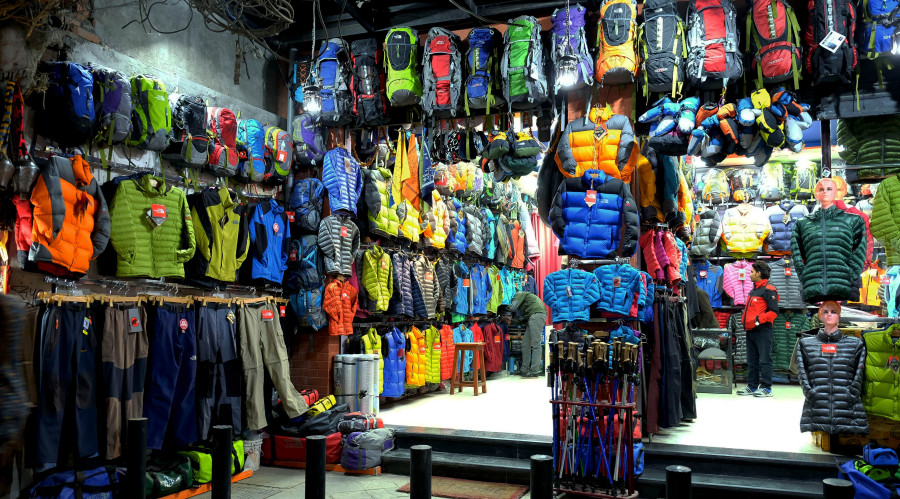Money
Nepal awaits revival of key US trade preference scheme
The generalised system of preferences expired in 2021. However, Nepali exports to US continue to claim benefits.
Krishana Prasain
The reinstatement of the generalized system of preferences (GSP), which has been aiding the competitiveness of Nepali exports in the global market is vitally important. It accounts for 80 percent of Nepal’s preference-claimed exports, according to a research paper.
Since its establishment in 1974, the GSP has provided duty-free treatment to certain exports from developing countries, including Nepal, to the United States.
It is one of several trade preference programmes through which the US seeks to help developing countries expand their economies by providing duty‐free entry to the US market.
According to a working paper series titled ‘The 66/77 products inside out: The long and short of the United States’ Nepal Trade Preference Programme’, published by South Asia Watch on Trade, Economics and Environment (SAWTEE), the restoration of GSP will preserve preferences for over a third of Nepal’s exports even if the Nepal Trade Preference Programme is not renewed after expiration.
The GSP expired nearly three years ago, which led US legislators to assess its effects and consider its revival.
In December 2023, the US House Ways and Means Committee introduced a bill that, if passed, will bring back one of the oldest US trade preferences programmes.
The programme expired on January 1, 2021.
Still, exports to the US from Nepal continue to claim GSP, on the assumption that it will be retroactively reinstated as in the previous instances of expiry, said the paper.
The US is Nepal's second largest export destination after India.
Nepal’s exports to the US rose significantly beginning in the mid-1980s and reached a peak in 2000. They tumbled thereafter due to an intensification of an armed conflict in Nepal that eroded the business climate. The phase-out of global quotas in the textiles and clothing sector exposed Nepal’s readymade garment industry to the full force of global competitive pressures, according to the paper.
Exports to the US in 2019, even in nominal terms, were still less than what they were in the mid-1990s.
The rise and fall of Nepal’s total exports to the US mirrors the rise and fall of its clothing exports to the US.
Since 2009, clothing exports have remained flat while total exports have been increasing, which implies that other products’ exports have increased.
The share of clothing, once the top item in Nepal’s US-bound export basket, nosedived from an average of 82 percent in 1999-2000 to 18 percent in 2018-2019.
The research paper said that imports, on the other hand, have risen steadily, and the trade balance, consistently positive during the export boom phase, has worsened over the past two decades to turn negative in four of the five years during 2015-2019.
The importance of the US market for Nepali exports has declined, with the US share in Nepali exports plunging from 27 percent in 1999-2000 to 11 percent in 2018-2019. Import share has also declined, from 4 percent in 1994-1995 to 1 percent in 2018-2019.
Nepali goods receive preferences from two windows. The first is the GSP and the second is the Nepal Trade Preference Programme.
Within the GSP there is a special trade preference scheme for a subset of developing countries, the least developed countries (LDCs), which face especially severe productive capacity and supply-side constraints.
The Nepal Trade Preference Programme is the flagship programme of the Trade Facilitation and Trade Enforcement Act (TFTEA) of 2015.
GSP is given to the LDCs. As Nepal prepares to graduate from the LDC category by 2026, it may not get the benefits.
Purushottam Ojha, former commerce secretary, said, “Nepal needs to request for continuation of the benefits during the transition phase after graduation.
The duty-free service given by the US to Nepal for 77 goods under the US Trade Bill will expire in December 2025 and it is unknown what will happen after that, he said.
“So, the government needs to work on time to secure an extension of the GSP benefits and service provided by the US Trade Bill.”
The government needs to discuss the issues during the US Trade and Investment Framework Agreement council meeting, which is held annually, Ojha said.
“Even though the GSP has technically expired, the US has continued the benefits through retroactive effect, which means if they are taking taxes, they will reimburse them later,” said Ojha.
Nepal’s GSP-eligible exports to the US were almost entirely those products for which preferential access is available to a wider set of developing countries rather than to just the least developed countries.
Nepali products exported to the US that were not eligible for any preferential scheme faced a median tariff of 5.6 percent and a maximum tariff of 55 percent in 2020.
Readymade Nepali garments and footwear are among products of export that face high tariffs and do not get any tariff preferences, the research paper said.
According to the Department of Customs, Nepal’s exports to the US declined by 9.23 percent to Rs11.01 billion in the first eight months of the current fiscal year that ended in mid-March.
Carpet, dog chew and felt products were among the highly exported goods in the US during the review period.
The country exported carpet worth Rs4.10 billion to the US followed by dog chew totalling Rs1.72 billion and felt products valued at Rs1.10 billion.
The annual exports, or the exports made by Nepal to the US in the last fiscal year, totalled Rs19.57 billion.




 15.12°C Kathmandu
15.12°C Kathmandu















